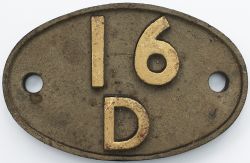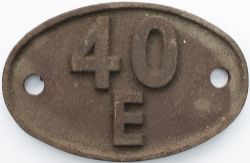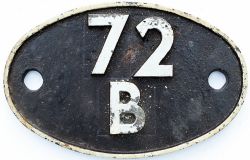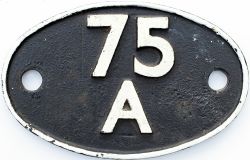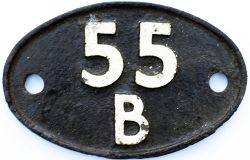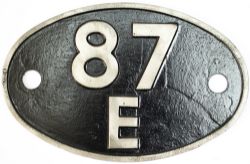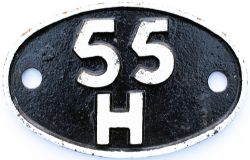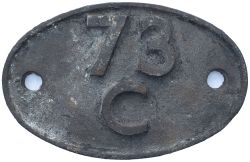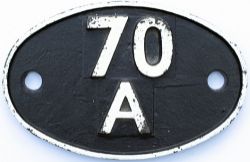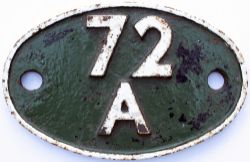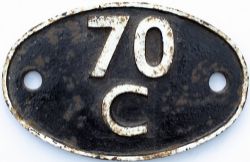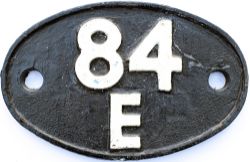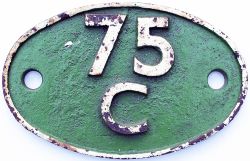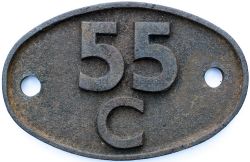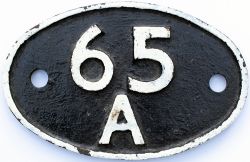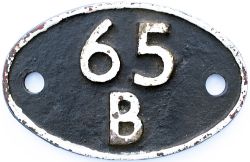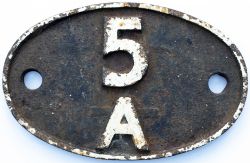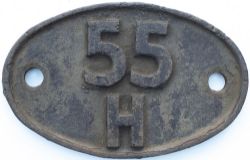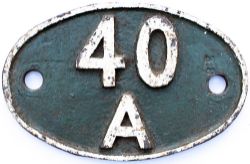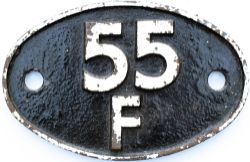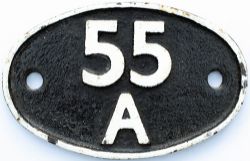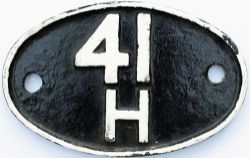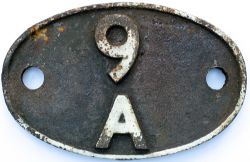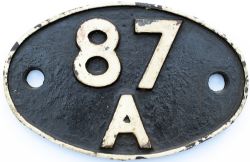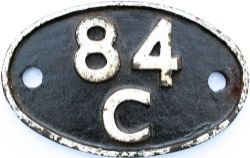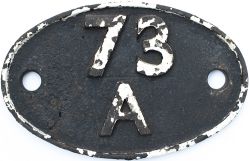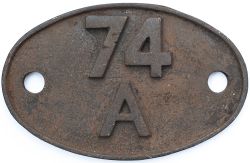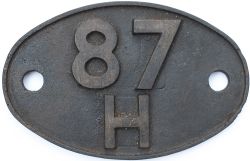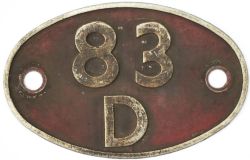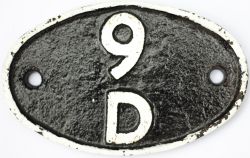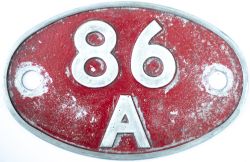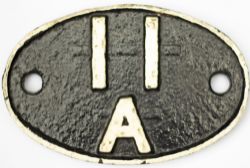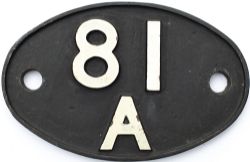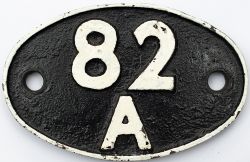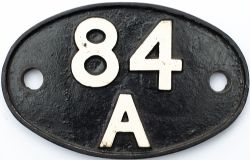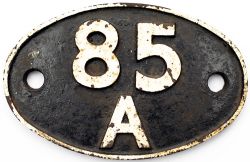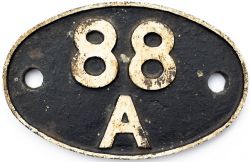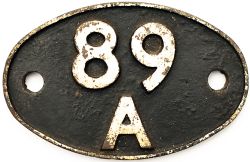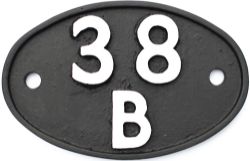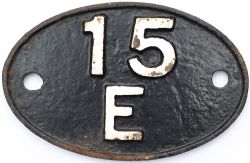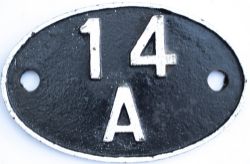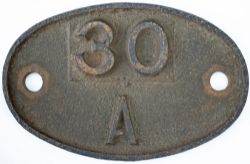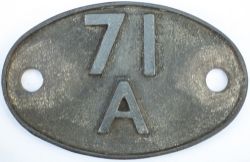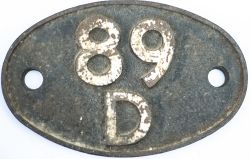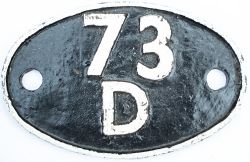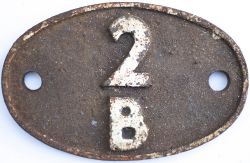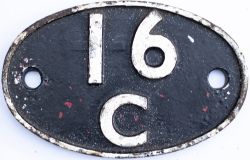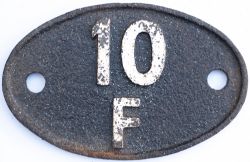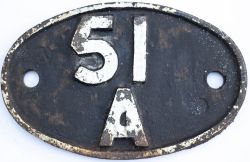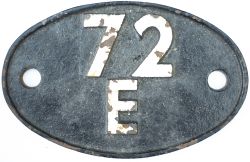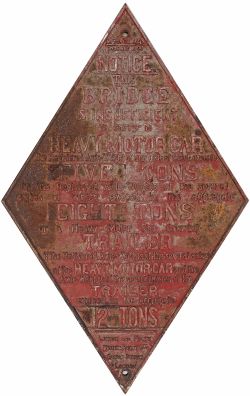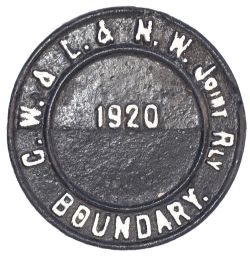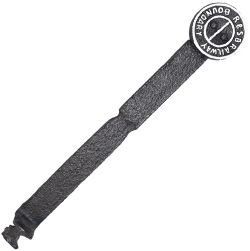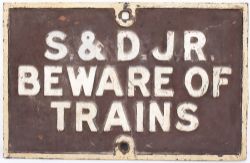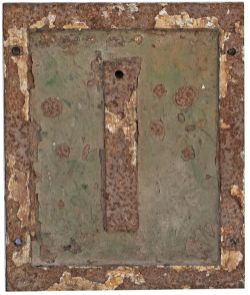You need to be registered and approved to bid at this auction.
Watch the auction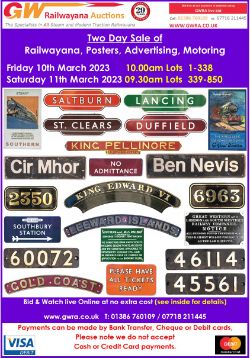
This is a Live Internet auction only
IF YOU LAUNCH THE LIVE BIDDING APP AND HAVE PROBLEMS VIEWING THE LIVE SALE, PLEASE DELETE YOUR EMAIL AND PASSWORD AND RE ENTER MANUALLY DO NOT USE AUTOFILL
If you have any issues trying to register please contact Auction Technology Directly as we haven’t got any access to your details.
support@auctiontechnologygroup.com
It is important that you sign up through our link not through the-saleroom.com directly as the point of sign up attracts different commissions.
|
Auction currency
|
GBP |
|
Accepted cards for registration
|
|
|
Accepted cards for payment
|
|
|
Other payment methods
|
Shedplate 16D Mansfield 1935-October 1955, then Annesley February 1958-September 1963, finally Nottingham September 1963-April 1965. Ex MR Mansfield had an allocation of just 25 locos during the 1950s, Ex GCR shed Annesley, formerly 38B, was transfer red to the LMR, and its allocation of 70 locos carried this code. Finally, ex MR Nottingham, formerly 16A, had around 60 locos on its books in 1964. Lightly face restored.
Shedplate 40E Colwick February 1958-January 1966. This ex GNR shed, formerly 38A, housed 150 locos while using this code. In January 1966, the shed was transferred to the LM region 16B, with closure in January of the following year. Face partially re stored.
Shedplate 72B Salisbury 1950 to December 1962. An allocation of 50 locos, containing 10 Battle of Britains, 3 Merchant Navy's and 7 King Arthurs graced this ex LSWR shed in the 1950s. In restored condition with the BR(S) Eastleigh triangle cast into the back and typical Southern region casting marks on the front. Vendor removed it from 34059 Sir Archibald Sinclair.
Shedplate 75A Brighton 1950-closed to steam June 1964. This ex LBSCR shed had a 1950s allocation of around 75 locos, most notable being the Brighton Atlantic's and a large number of the Schools 4-4-0s. A handful of West Country Pacifics were also mai ntained here. Face restored with the BR(S) Eastleigh triangle cast into the back and typical Southern region casting marks on the front.
Shedplate 55B Stourton February 1957-January 1967, then York December 1967-May 1973. The ex MR shed at Stourton, formerly 20B in 1935, was transferred to the NER when it adopted this code. It had around 35 locos during this period. The ex NER shed at York took on this code after becoming a diesel depot, finally closing in March 1984, and becoming part of the NRM. In Restored condition.
Shedplate 87E Landore Aluminium. These were used on this purpose built diesel depots allocation of hydraulics including Western's. Face restored.
Shedplate 55H Leeds Neville Hill January 1960-June 1966 for steam. This ex NER shed, formerly 50B, had around 20 steam locos using this code in the 1960s. Its large allocation of DMUs also sported such plates. In Restored condition.
Shedplate 73C Hither Green 1948 to October 1961 for steam. This ex SR shed was home to around 50 locos during the 1950s. It became home to Class 24 and 33 diesels, many carrying this type of code. In as removed condition with the BR(S) Eastleigh tria ngle cast into the back.
Shedplate 70A Nine Elms 1950 to July 1967. This ex LSWR depot was London's last bastion of SR steam. Home to around 100 locos in the 1950s, by 1965 it still had charge of 40 locos, which included seven BR 5MT namers, and a handful of West Countries. Face restored with typical Southern Region casting marks to the front.
Shedplate 72A Exmouth Junction 1950- September 1963. This ex LSWR shed to the east of Exeter had over 120 locos allocated throughout this period. At its peak it had 33 Bullied Light Pacifics and 7 Merchant Navies as well as 5 of those exotic Z class 0-8-0 tanks. In September 1963 it received the WR code 83D. In restored condition with the BR(S) Eastleigh triangle cast into the back and typical Southern region casting marks on the front. Ex 34011 Tavistock, see the West Country Scroll elsewhere in this auction.
Shedplate 70C Guildford 1948-July 1967. This ex LSWR shed was home to 45 locos in the 1950s and towards the very end of SR steam, it still looked after a good number including several 73xxx standard namers. In face restored condition with typical Sou thern region casting marks to the front.
Shedplate 84E Tyseley 1949-September 1963. This ex GWR depot had well over 100 locos on its books during the time it used this code. It was transferred to the LMR and became 2A, finally closing to steam in November 1966. Face lightly restored, with c lear Swindon casting marks on the rear and edge.
Shedplate 75C Norwood Junction 1950-January 1964 to steam, small allocation of diesel shunters until closure in 1966 In early BR days this ex SR shed had 40 locos, which was reduced to 18 in its final year. A small fleet of diesel shunters also carr ied this code; 3 03s, 15 08s and 3 of their SR forerunners. Face restored condition with the BR(S) Eastleigh triangle cast into the back and typical Southern region casting marks on the front.
Shedplate 55C Farnley Junction October 1956-November 1966. This ex LNWR shed was transferred from the LM region 25G in 1956, when all 50 locos received this code. In its final year it had just 5 Black 5s, a solitary 8F, and 3 Jubilees. In lightly cle aned condition.
Shedplate 65A Eastfield 1948-November 1966 for steam. This ex NBR shed housed a star studded allocation of 170 locos in the early 1950s. Of note were K1, K2, and K4 2-6-0s, along with D11 and D34 4-4-0s. By 1965, however the total number of steam loc os was down to single figures. Many of Eastfields diesel locos also carried this style of code well in to the 1970s. Face restored with the Scottish District shed casting pattern number etc cast into the back.
Shedplate 65B St. Rollox 1949-November 1966. The ex CR shed was noted for being home to all four named Black 5s in the early 1950s when its allocation numbered around 80 locos. In its final year it had just 13 locos, one of them being A4 60031 Golden Plover. Lightly face restored over original paint.
Shedplate 5A Crewe North 1935 to May 1965. This ex LNWR shed with its predominance of express passenger engines was a spotter's Valhalla. Patriots, Jubilees, Royal Scots, Princesses, Coronations, and in the final years Britannias, all graced this dep ot. 130 locos were allocated here in the 50s and in its final months around 40 locos carried this code. Lightly face cleaned.
Shedplate 55H Leeds Neville Hill January 1960-June 1966 for steam. Its large allocation of DMUs also sported such plates and this is probably from one of them as it has plenty of traces of brake dust, traces of red paint and a flat back.
Shedplate 40A Lincoln 1949-1/64. This ex GNR shed was the largest of three sheds in the city. The 1950 allocation was a substantial 64 locos, and by 1959 it had three B1 namers in its total of 51 locos. The shed closed in 1964, but the DMU and shunte r allocation continued carrying the code, although they were maintained at the former GCR shed. This closed in October 1987. Face lightly restored.
Shedplate 55F Bradford Manningham February 1957 to April 1967, then Bradford Hammerton Street December 1967 to 1973. The ex MR shed at Manningham, formerly 20E in the LMR, had 25 locos on its books when using this code. The former GNR shed at Hammert on Street was converted into a diesel depot and many of its allocation of DMUs and diesel shunters carried this code. In restored condition.
Shedplate 55A Leeds Holbeck October 1956-October 1967 closed to steam. The ex MR shed at Holbeck was transferred from the LMR 20A to the NER in 1956. 80 locos were present when this change took place, but it is probably the early 1960s that it is wel l remembered. Its allocation of A3s, Jubilees and Royal Scots, were often seen working over the Settle and Carlisle line. It also had an allocation of Class 45 Peaks, and many of these carried this style of plate. In restored condition.
Shedplate 41H Staveley Central February 1958-June 1965. This ex GCR shed, formerly 38D, was home to 40 locos when it took on this code. Face restored.
Shedplate 9A Longsight 1935-February 1965. This ex LNWR shed was home to130 locos in 1950, which included 13 Royal Scots, 15 Jubilees and 7 Patriots. In 1962 the dwindling number of passenger locos was supplemented by an influx of 7 Britannias. In or iginal condition.
Shedplate 87A Neath 1949-June 1965. This ex GWR shed was home to 60 locos during the 1950s. In its final few months this had dwindled to just 10. Face restored with clear Swindon casting marks to rear and edge.
Shedplate 85F Bromsgrove February 1958-September 1960. This ex MR shed formerly 21C was transferred to the WR when it had an allocation of just 11 including the famous Lickey bankers. Face lightly cleaned with clear Swindon casting marks to rear and edge.
Shedplate 84C Banbury 1949-September 1963, then Truro September 1963-November 1965. The ex GWR shed at Banbury housed between 50 and 70 locos during this period, before it was transferred to the LM region, becoming 2D. By the time the ex GWR shed at Truro had gained this code, it had lost its steam allocation and was being used as diesel stabling point. Closure came in November 1965. Face restored.
Shedplate 73A Stewarts Lane 1950 to June 1962. This ex SECR shed had an allocation of over 100 locos during this period. Of note were 7 King Arthurs, 6 Schools 13 Bullied Light Pacifics and 3 Merchant Navy's. In June 1962 it was recoded 75D, and lost its steam allocation in September 1963. It is still a Repair and Maintenance depot for diesel and electric locos and a servicing point for steam locos. Face lightly restored with the BR(S) Eastleigh triangle cast into the back and typical Southern region casting marks on the front.
Shedplate 74A Ashford 1950-October 1958. This ex SR shed had six King Arthurs in an allocation of 60 in 1950. By the time it was recoded 73F in 1958, the total number of locos was down to 40.It finally closed to steam in June 1962. Face lightly clean ed with the BR(S) Eastleigh triangle cast into the back and typical Southern region casting marks on the front.
Shedplate 87H Neyland 1949-September 1963, then Whitland until December 1963. The ex GWR shed at Neyland had an allocation of 45 locos which at one time included 4 Counties, 4 Halls and a solitary Manor. On closure, sub shed Whitland used the code fo r its allocation of 15 locos until it too closed just three months later! Face lightly cleaned, rear and edge with clear Swindon casting marks.
Aluminium shedplate 83D Plymouth Laira to September 1963. In as removed condition, these were fitted to the early Western Region hydraulics.
Shedplate 9D Buxton 1935 to September 1963, then Newton Heath September 1963 to February 1968. The ex LNW shed at Buxton had 55 locos in the 1950s, before becoming 9L. The ex LYR shed at Newton Heath, formerly 26A, had 80 locos on its books. In light ly cleaned condition.
Shedplate 86A Cardiff Canton 1963-1973. This aluminium code was used by diesel hydraulic and diesel electric locos. In lightly cleaned condition with original green paint on the edge and traces on the back.
Shedplate 11A Carnforth 1948-April 1958, then Barrow-in-Furness April 1958-June 1960. The ex LNWR shed at Carnforth was home to around 40 locos in the 1950s. The ex FR shed at Barrow had 50 locos in the short while it used this code.
Shedplate 81A Old Oak Common 1949 to March 1965. This ex GWR shed had a star studded allocation of nearly 200 locos in the 1950s, including 8 Counties, 30 Castles, 13 Kings and 37 Halls, making it the largest shed in the Western region. Lightly face restored, rear and edge with clear Swindon casting marks.
Shedplate 82A Bristol Bath Road 1950 to September 1960 for steam. This ex GWR shed was home to around 100 locos during the 1950s. The star studded allocation included 6 Counties, 9 Stars, 21 Castles, 14 Halls and a solitary King in 1950. On becoming a purpose built diesel depot in 1960, some of its allocation carried these codes before the alloy version was introduced. Face restored, rear and edge with clear Swindon casting marks.
Shedplate 84A Wolverhampton Stafford Road 1949-September 1963, then Plymouth Laira September 1963-June 1973. The ex GWR shed at Wolverhampton had a star studded allocation throughout its BR life. In 1950 its allocation of 66 locos included 5 Counties , 10 Castles, 6 Stars, 6 Kings, 8 Halls and 2 Granges! By 1959, while the overall total had reduced to 47, its King allocation had gone up by 2! Plymouth Laira, formerly 83D, used this code for 7 months before it lost its steam allocation. However some of its diesels were known to have carried this style of plate. Lightly face restored, rear and edge with clear Swindon casting marks.
Shedplate 85A Worcester 1949-December 1965. This ex GWR shed was home to 80 locos in the 1950s, including Bulldogs, Stars, Castles, Halls and Granges. Even in its final year it hosted 6 Halls and 5 Granges in a total of 24 locos. Lightly face restore d, rear and edge with clear Swindon casting marks.
Shedplate 86A Ebbw Junction 1949-September 1963. The ex GWR shed at Newport had an allocation of 150 locos during this period, and was then recoded 86B, closing to steam in August 1966. The code was then taken over by Cardiff Canton in 1963, which by this time had lost its allocation of steam locos. In restored condition, rear and edge with clear Swindon casting marks.
Shedplate 88A Cardiff Cathays 1949-December 1957, then Cardiff Radyr December 1957-October 1960, then Cardiff Canton October 1960-September 1962. The ex TVR shed at Cathays had an allocation of 80 locos, while ex GWR shed Radyr had 55 locos during th is period. Ex GWR Canton’s allocation of 130 included 12 Britannias until September 1961. Canton closed to steam in September 1962 and became a diesel depot. Lightly face restored.
Shedplate 89A Oswestry 1948 to January 1961, then Shrewsbury January 1961 to September 1963. The former Cambrian Railway shed had an allocation of around 50 locos including 6 Manors during the 1950s. It was recoded 89D, then 6E and closed in January 1965. The ex GWR/LNWR Joint shed at Shrewsbury, formerly 84G, had an allocation of 100 locos including Counties, Castles, Manors and Halls when using this code. Recoded 6D, it closed to steam in September 1967. Lightly face restored, rear and edge with clear Swindon casting marks, complete with original Swindon receipt dated September 1966.
Shedplate 38B Annesley 1949-February 1958. This ex GCR shed was home to 80 locos when using this code. It was transferred to the LMR becoming 16D and finally 16B, closing in January 1966. Face restored a rare shedplate.
LMS Shedplate 32A Inverness 1940-1950. This LMS pattern plate was used at this ex Highland Railway shed from 1940-1950 after it was renumbered from 29H. Lightly face restored an extremely rare shedplate.
Shedplate 15E Leicester GC February 1958-September 1963, then Coalville September 1963-October 1965. The former LNER shed at Leicester ER code 38C had an allocation of around 20 locos mostly B1s with a handful of V2s when using this code. The ex MR shed at Coalville was home to 17 Stanier 8Fs in the final two years of the sheds existence. In face restored condition.
Shedplate 14A Cricklewood 1935-September 1963. This ex MR shed was home to 90 locos in 1950, but by the time it changed code to 14B it only had around 30 locos left. It finally closed to steam in December 1964. Some diesel locos that were allocated to the new diesel depot, also coded 14A, may also have carried these plates.
Shedplate 30A Stratford until 1973. As fitted to some of the depot's Diesel locomotives. In original as removed condition with plenty of brake dust.
Shedplate 71A Eastleigh 1950-September 1963. This ex LSWR shed housed eleven King Arthurs and eight Lord Nelsons among its 1950 allocation of 140 locos. By the time it changed code to 70D in 1963, fifteen West Country pacifics were present in a total of 100 locos. Closure to steam came in July 1967. In lightly cleaned condition with typical Southern region casting marks on the front and the BR(S) Eastleigh triangle cast into the back.
Shedplate 89D Oswestry September 1960-September 1963. During the time this ex Cambrian Railways shed used this code it had an allocation of around 40 locos. Formerly 89A, Oswestry came under the LMR in September1963 when it became 6E; a code it used for just three months prior to closure in January 1964. In original condition with clear Swindon casting marks in the edge and rear.
Shedplate 73D Gillingham 1948 to June 1959. This ex SECR shed had an allocation of around 35 locos during the 1950s. It lost its allocation in 1959 but remained a sub shed servicing locos from Tonbridge. It finally closed in June 1960. Face restored with the BR(S) Eastleigh triangle cast into the back.
Shedplate 2B Nuneaton 1950-September 1963 then Oxley September 1963-closed to steam November 1966. The ex LNWR shed at Nuneaton had an allocation of 70 locos during the 1950s, before it lost this code to become 5E. The ex GWR shed at Oxley was transf erred from the WR 84B, and its allocation of around 60 locos included 15 Granges and 2 Manors. In lightly cleaned condition.
Shedplate 16C Kirkby-in-Ashfield 1935-October 1955, then Mansfield October 1955-April 1960, then Derby September 1963-March 1967 for steam. The ex MR shed at Kirkby had over 60 locos in the 1950s. Mansfield, another MR shed had 30 locos when it adopt ed this code. Finally, Derby-the MR HQ-had 40 steam locos, along with numerous diesels that also used this code. Lightly face restored.
Shedplate 10F Lower Ince from May 1950 until March 1952 and then Rose Grove until August 1968. Lightly face restored.
Shedplate 33A Plaistow 1948 to November 1959. This ex LTSR shed had over 80 locos in 1950, and by the time it lost its code, becoming a sub shed of 33B Tilbury, it still had 40 locos on its books. It finally closed in June 1962. Lightly face restored .
Shedplate 51A Darlington 1948-March 1966 The ex NER shed housed 112 locos in 1950, and by 1959 this had dwindled to 70. During its BR life it was home to no fewer than 16 different A3s and 12 different B1 Antelopes. In 1965 its solitary A1 Kenilworth , was often found on ECML standby duty. A dozen 0-6-0 diesel shunters also carried this code. Lightly face restored.
Shedplate 72E Barnstaple Junction 1950-December 1962. This ex LSWR shed housed 13 locos. In 1962 it was transferred to the WR and eventually received its new code 83F in September 1963. In restored condition with the BR(S) Eastleigh triangle cast int o the back and typical Southern region casting marks on the front.
Cast Iron Bridge Diamond. LONDON & NORTH WESTERN RAILWAY COY EUSTON STATION LONDON. MOTOR CAR ACTS 1896 & 1903. Complete with all tonnage plates although the 5 has minor loss. IN original condition measures 49in x 30in
Great Western and London & North Western Railway Joint Boundary post top dated 1920. Circular cast iron with post removed measures 8in diameter x 4.5in tall so easy to display.
Rhondda and Swansea Bay Railway cast iron boundary post complete with original rail mounted post, measures 41in long. A rare boundary post.
Somerset and Dorset Joint Railway cast iron Sign S.& D.J.R. BEWARE OF TRAINS in totally original condition with British Railways Western region paint, possibly the best one ever offered for sale. Measures 26in x 16.5in.
Shropshire Union Railways & Canal Company cast iron BRIDGE NOTICE. Measures 26in x 14in and is in nice original condition.
London & South Western Railway cast iron bridgeplate 1. In original condition measures 10in x 12in and is believed to have come from Barnstaple Junction station where the Bideford line diverged from the Ilfracombe line.
Confirming your bid is a legally binding obligation to purchase and pay for the lot should your bid be successful.
Confirming your bid is a legally binding obligation to purchase and pay for the lot should your bid be successful.
